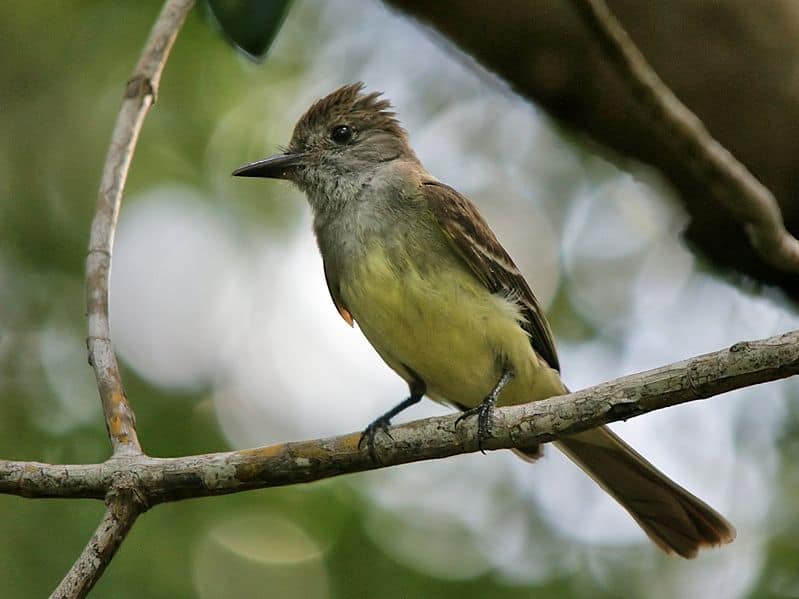Look for
One of our larger flycatchers at 8 ½ inches tall, the great crested flycatcher is a pleasing blend of colors with a lemon belly and underwings and a rufous tail, set off by a gray head and olive back. Males and females are alike in appearance, and both will aggressively defend their nesting territory against trespassing birds of almost any species.
Listen for
Although one of the largest and most common eastern flycatchers, the great crested flycatcher is raucous enough that it is usually heard before it is seen. A loud, enthusiastic wheeep! or whit-whit-whit-whit call is most often heard in woodland clearings during the summer months.
Find it
Great crested flycatchers can be found in open woodlands, forest clearings, and even in wooded city parks throughout eastern North America during the summer months. Winter finds most of them in southern Mexico and southward to South America, though some spend the winter in south Florida. Fall migration starts in late August, with spring migrants returning to the Gulf Coast by late March.
Feed it
Capturing flying insects is the great crested’s main foraging mode, but it will also glean insects from vegetation and supplement its diet with small berries and fruits. Butterflies, moths, beetles, and grasshoppers are its most common foods. Great cresteds usually forage high in the treetops or from a high, exposed perch.
Nesting Behavior
A cavity nester that cannot excavate its own nest hole, it must rely on finding old woodpecker holes, naturally occurring hollows in trees, or human-supplied nest boxes. After inspecting possible nest sites with her mate, the female begins nest building using an incredible array of material, including animal hair, feathers, pine needles, string, cellophane, and shed snakeskin. Why great cresteds use such a variety of materials is a mystery. Five or more eggs are laid and incubated by the female for about two weeks. Two weeks after hatching, young flycatchers leave the nest.
WOW!
This flycatcher often includes shed snakeskin in its nest — perhaps to deter predators, but they also simply like the crinkly feel of the skin.




